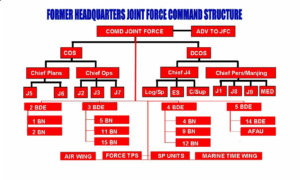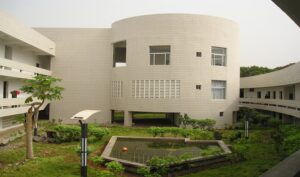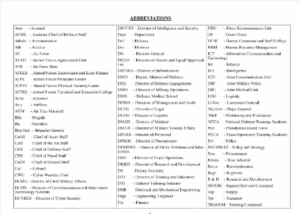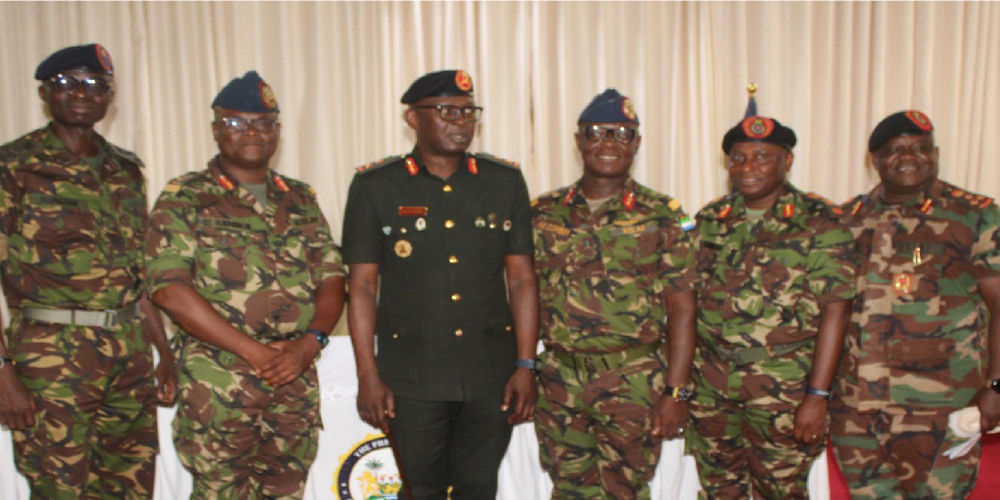capatin Navy LK Jabati, Chief of Naval Staff, Republic of Sierra Leone Armed Forces
EXPO MAGAZINE
By capatin Navy LK Jabati, Chief of Naval Staff, Republic of Sierra Leone Armed Forces
The Republic of Sierra Leone Armed Forces (RSLAF) has embarked on a historic transformation under the directive of Chief of Defence Staff (CDS) Major General Amara Idara Bangura. As the CDS marks his first 100 days in office, the implementation of the Tri-Service structure stands as a cornerstone of his leadership—a bold stride toward modernizing Sierra Leone’s defence capabilities and ensuring seamless integration across land, sea, and air domains.
From Joint Force Command to Tri-Service: A Strategic Evolution
For over two decades, the RSLAF operated under the Joint Force Command (JFC), established in 2001 as part of post-civil war Security Sector Reforms (SSR). Tasked with securing borders and conducting joint operations with the Sierra Leone Police (SLP), the JFC oversaw infantry brigade, maritime and air wing and critical support units such as engineering, logistics, and medical teams. While effective in its time, the JFC’s operational framework grew increasingly misaligned with the demands of modern warfare and Sierra Leone’s evolving security landscape.
In 2019, His Excellency President Julius Maada Bio, Commander-in-Chief of the RSLAF, initiated the reversion to a Tri-Service structure. This shift reflects a global trend toward integrated military forces capable of addressing multi-domain threats. Under Major General Bangura’s leadership, this vision has accelerated into reality, with the Army, Navy, Air Force, Training Command (TRACOM), Combat Service Support Command (CSSCOM), and Combat Support Brigade now operating under a unified, agile framework.
WHY THE TRI-SERVICE?
The Tri-Service
Implementation: Collaboration in Action
To ensure a seamless transition, CDS Bangura established the Tri-Service Implementation Committee, chaired by the Chief of Air Staff and comprising representatives from all service branches. This committee has spearheaded the design of strategies to create an “affordable, agile, and accountable” Tri- Service structure. Key milestones include:
- Appointments and Structure:
Service chiefs and unit commanders have been strategically appointed to lead specialized domains, fostering accountability and expertise.

Defence Headquarters Cockrill North


- Consultative Governance
Extensive consultations with Army, Navy, Air Force, TRACOM and CSSCOM leaders ensured alignment with national security priorities.
- Operational Synergy
The new structure dismantles silos, enabling cross-service collaboration in training. Resource allocation and mission execution.
Why Tri-service? Strengthening Sierra Leone’s Defence Architecture
The Tri-Service model is not merely structural -it is a strategic imperative. Its implementation addresses five critical needs:
- Enhanced Operational Effectiveness:
By integrating the Army’s ground dominance, the Navy’s maritime vigilance and the Air Force’s aerial reconnaissance, RSLAF can deploy multi-dimensional responses to threats.
- Adaptability to Modern Warfare:
Cyber hybrid, and asymmetric threats demand interoperability across domains. The Tri-Service structure ensure RSLAF is prepared for 21st-century challenges.
- Rapid Decision Making:
A unified command hierarchy under the Defence Headquarters (DHQ)
reduces bureaucratic delays. Enabling swift responses to crises.
- Resource Optimization
Shared logistics, training facilities and intelligence networks minimize efficiency
- National pride and cohesion
The Tri-Service reinstates RSLAF’s historical identity while fostering unity among personnel, reinforcing there role as guardians of peace.
The Road Ahead: Building a Legacy of Excellence
In just 100 days, CDS Bangura has laid the groundwork for a transformed RSLAF. The rehabilitation of the Defence Headquarters structure symbolizes this renewal, with redesigned command layers that emphasize transparency and accountability. Key focus areas moving forward include:
- Joint Training Programs: Regular cross
service exercises to enhance interoperability
- Technology Integration:
Leveraging digital tools for command, control, and communication.
- Veteran Inclusion:
Aligning the Veteran Bill Policy with Tri-Service values to honor retired personnel.
A Collective Triumph
This milestone is a testament to collaborative leadership. The Deputy Minister of Defence, the Director General of MoD, Service Chiefs, and all RSLAF personnel have rallied behind the vision of the CDS. Their collective efforts underscore a shared commitment to safeguarding Sierra Leone’s sovereignty and prosperity
CONCLUSION
Major General Amara Idara Bangura’s first 100 days have redefined the RSLAF’s trajectory. He has not only honoured the Commander-in-Chief’s directive but also positioned Sierra Leone’s Armed Forces as a model of innovation and unity. As the RSLAF embraces this new chapter, the nation can rest assured: its defenders are stronger, nimbler, and more prepared than ever to uphold peace and security.
For further details on RSLAF’s transformation, visit: www.mod.gov.sl
In Unity, We Secure the Future
Copyright –Published in Expo Magazine, march-April 2025 Edition,Vol.3, No.3, (ExpoTimes News – Expo Media Group (expomediasl.com)




